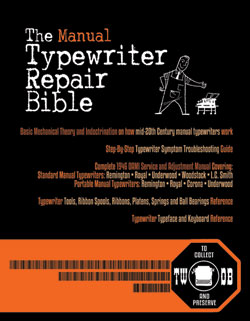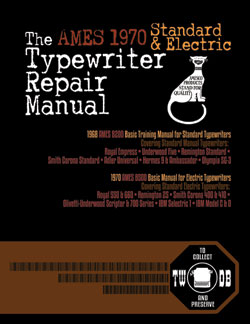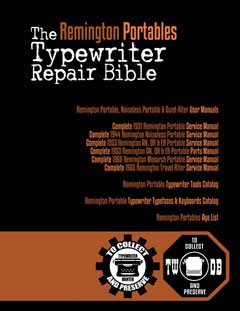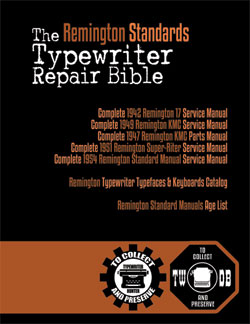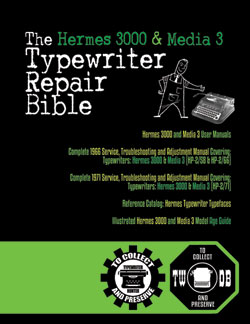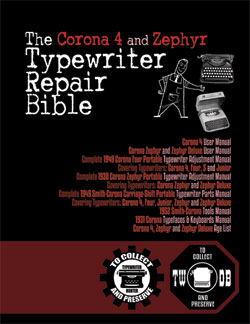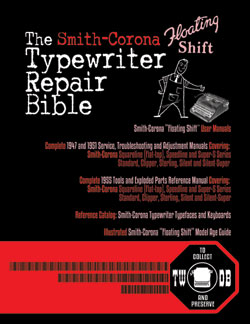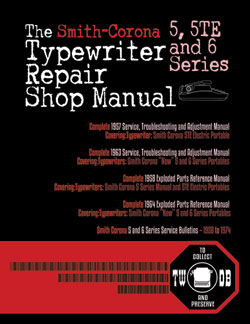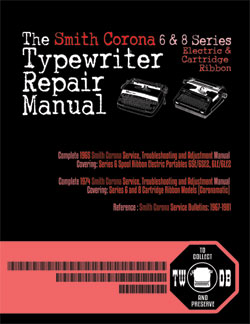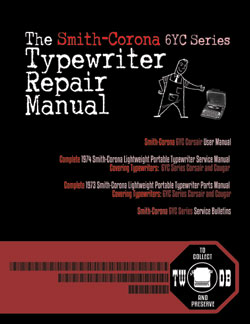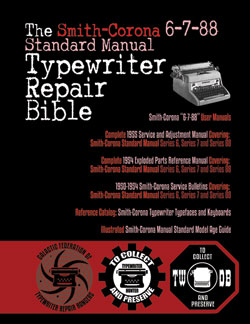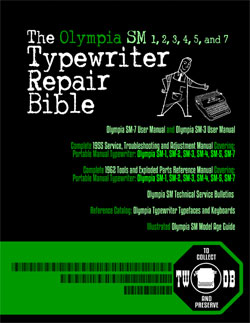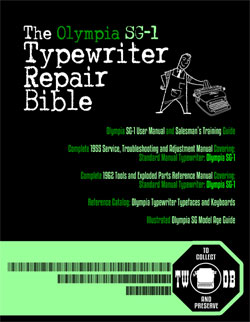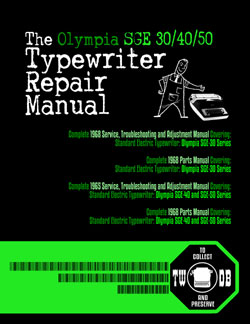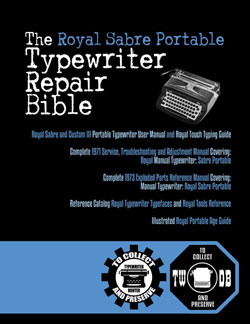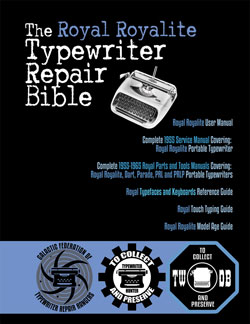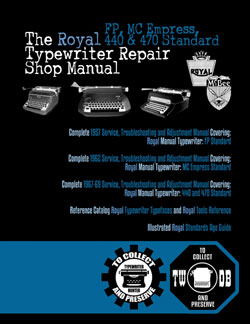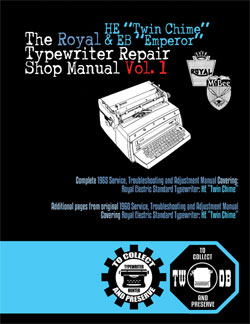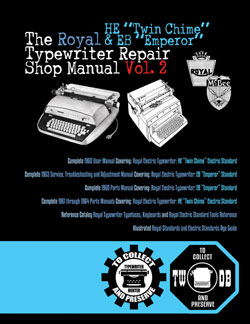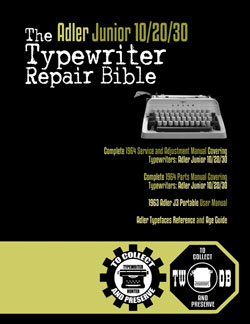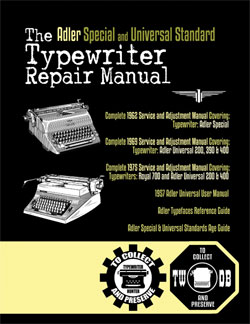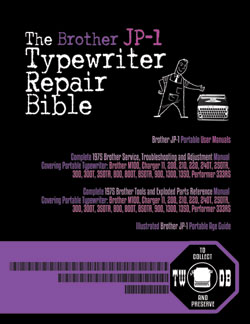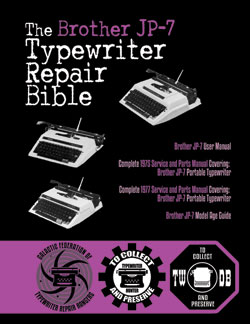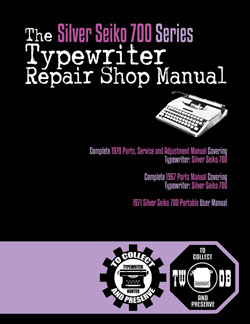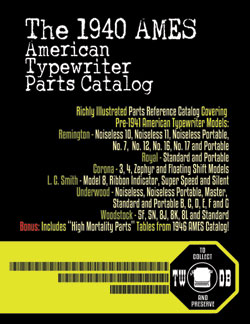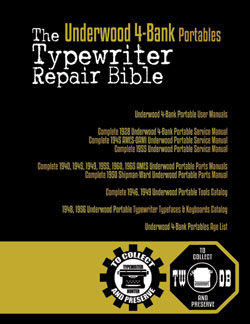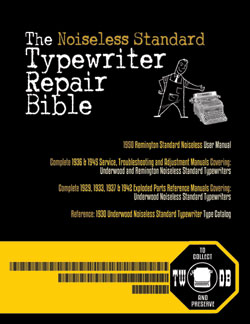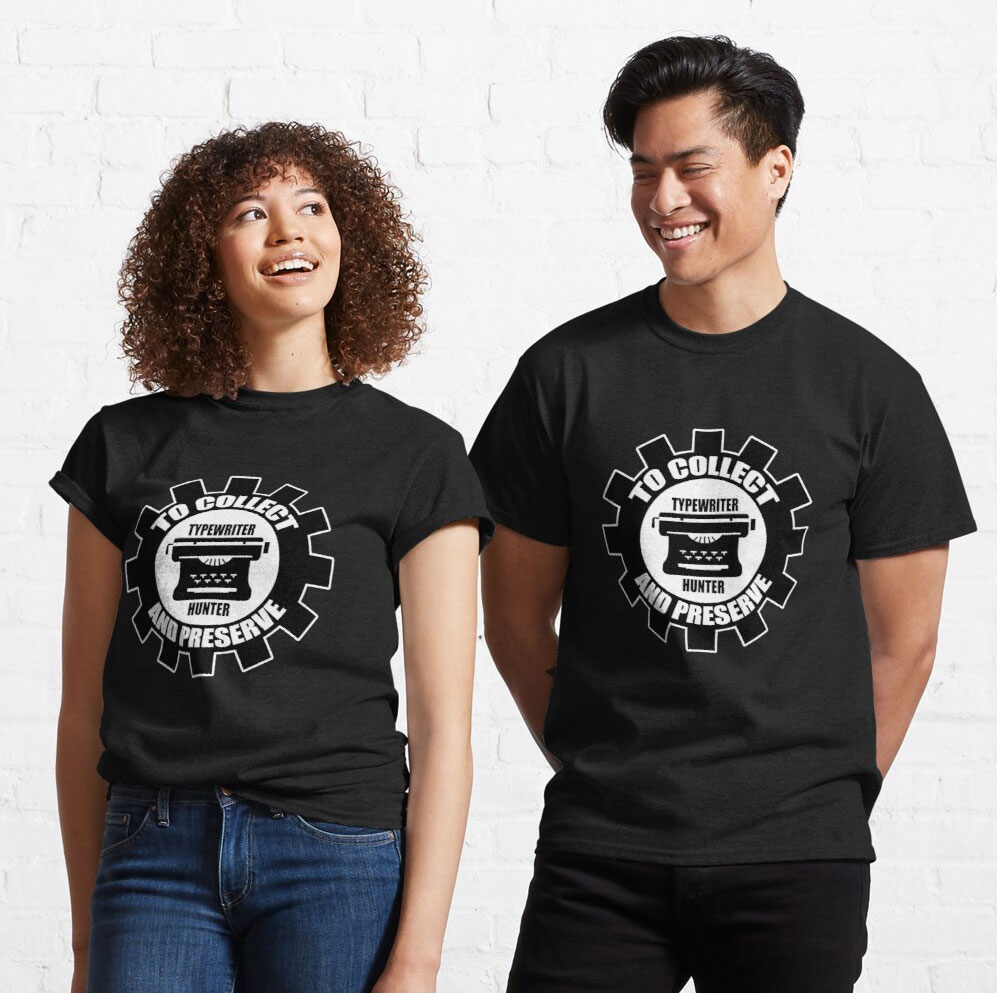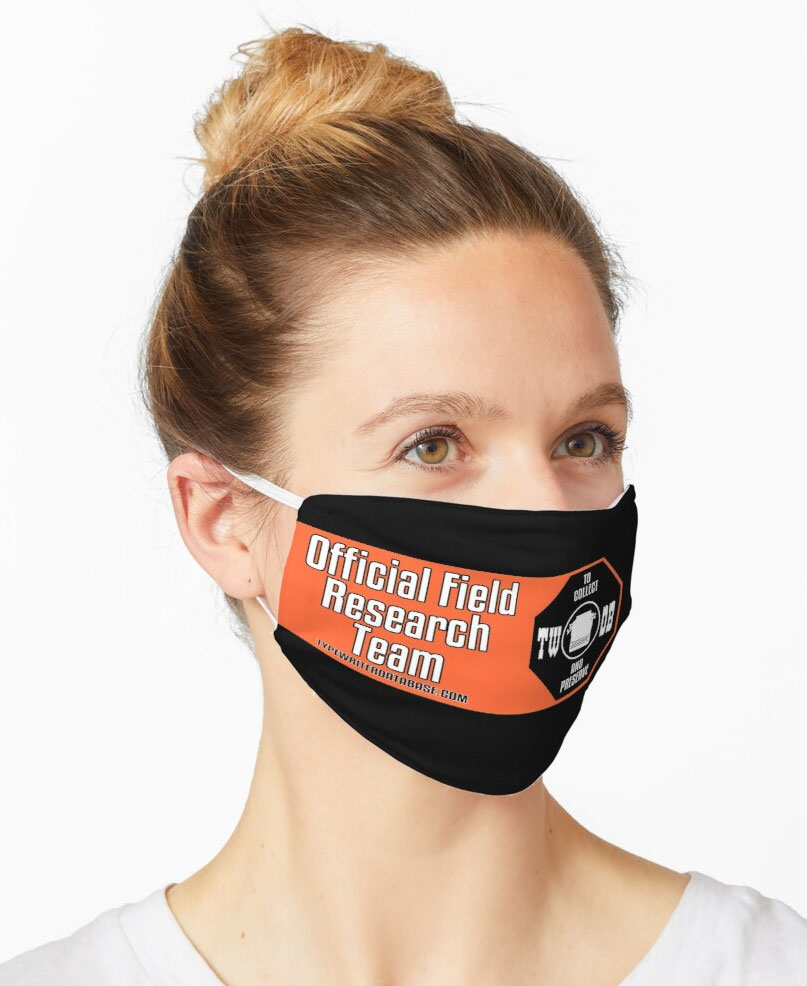1973 Optima M16 #744100
Status: My Collection
Hunter: Hans Boersma (Java68)
Created: 12-11-2016 at 07:10AM
Last Edit: 08-31-2023 at 02:47AM
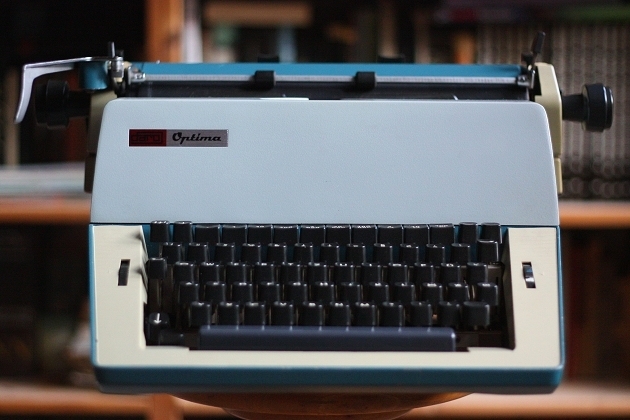
Description:
Built in the former German Democratic Republic (Deutsche Demokratische Republik, DDR) by VEB Optima B├╝romaschinenwerk Erfurt.
German keyboard (qwertz), Pica typeface (ten-pitch), five line-spacing settings, keyboard touch regulator, four-colour ribbon selector, keyset and decimal tabulator, s p e r r s a t z - key, typebar unblocking key, extending paper support with scale. Weight: 17,3 kg.
The M16 was produced from 1965 to 1977. The year of manufacture of this machine would be 1977: between 1977 and 1985 Optima standards were co-branded "daro" (officially without capital letter), standing for "Datenverarbeitung, Automatisierung, Rationalisierung, Organisation" [1]. This machine also carries the "daro" logo. (2023 update: the Optima serial number table on this website now lists 1973 as the year of manufacture. This means that the aforementioned daro-branding information is wrong or that the hood was replaced later on.) For successive models the Optima brand was abandoned altogether, first in favour of daro, then Robotron: the Optima M16 was followed by the Daro 18 and Daro 20, also Robotron 20; then came the Roboton 22 and 24, which were the last manual machines produced by Optima/Robotron.
This M16 arrived from Germany badly damaged during transport, but with effort I managed to restore it to operational status (see the link "Arisen fron Ruins"). The Model 16 is a remarkably heavy machine even though plastic parts were used to shed some of the M14's weight. Also remarkably heavy I found its key action, but to my surprise this improved significantly when I lowered the tension on the mainspring. Later I located a relatively large, more or less diagonally placed spring inside the machine which, if stretched a bit, lightens the key action even more effectively. It seems counter-intuitive, but apparently this spring had become more rigid over time.
A charmingly unpretty machine and a pleasant typer. Probably due to the amount of work I had to put into it I've grown rather fond of this rehabilitated DDR relic.
Hans Boersma
__________
[1] S. Junge et al. "Entwicklung und Produktion von Erzeugnissen der Schreibtechnik im Kombinat Robotron", Dresden 2008, p. 22.
Typeface Specimen:
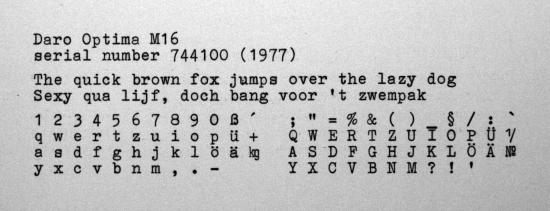
Links:
- Optima M16, as used by the Stasi (Ministerium f├╝r Staatssicherheit der DDR), here fitted with a Robotron 20 ribbon cover
- Optima M14, the predecessor of the M16
- Optima M12, the predecessor of the M14
- Optima M10, the first of the Optima standard typewriters
- Arisen from Ruins (Typewriter Revolution Blog)
Photos:
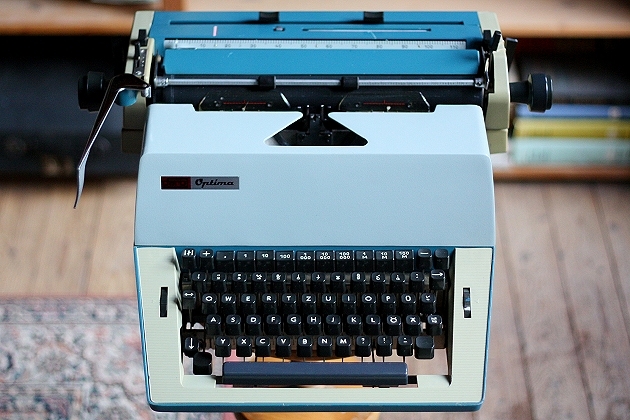
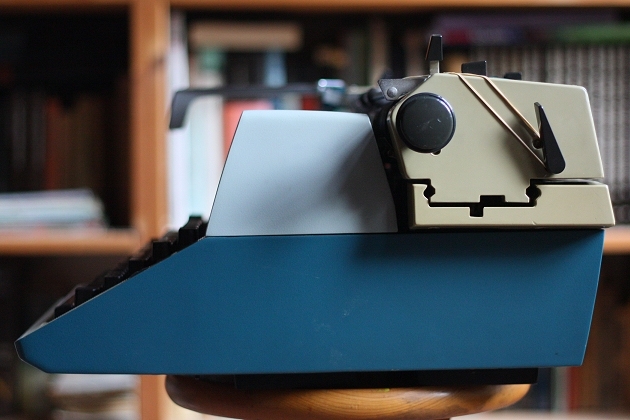
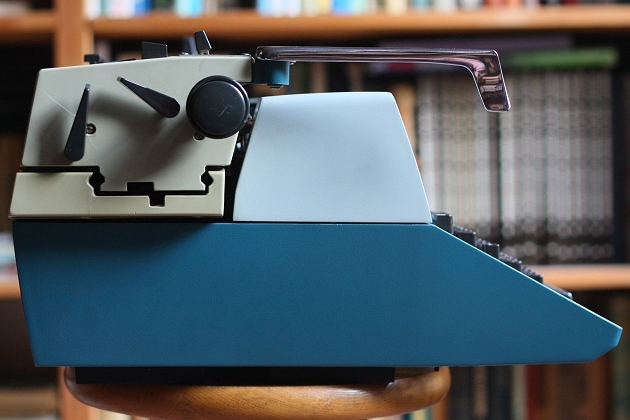
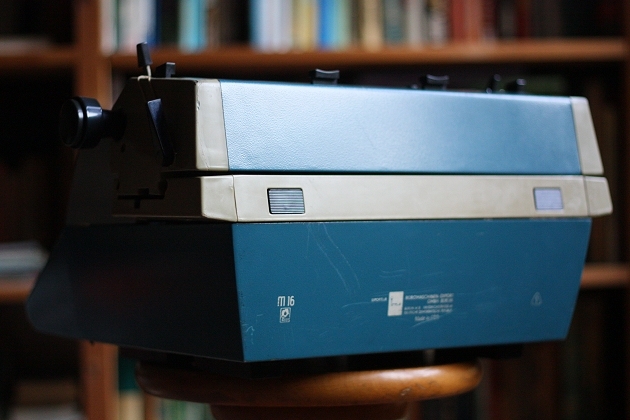
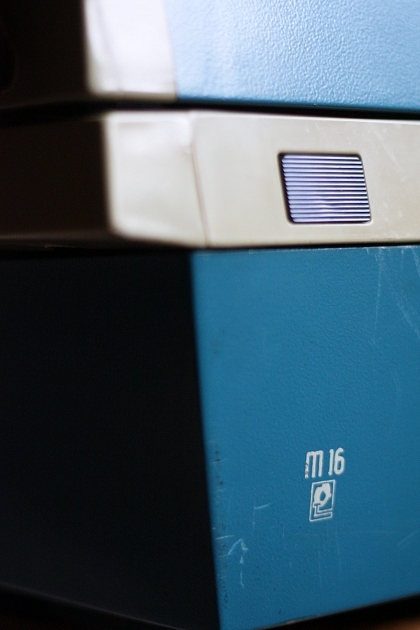
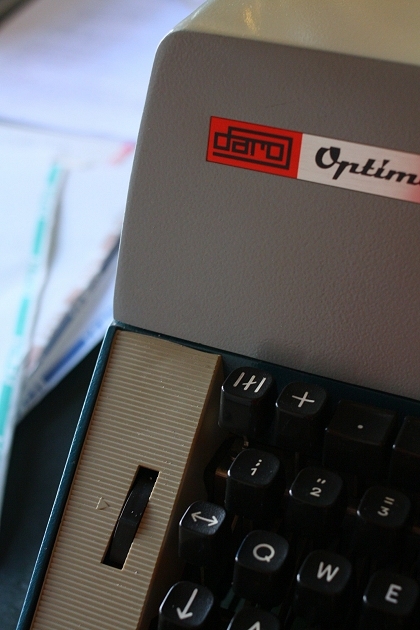
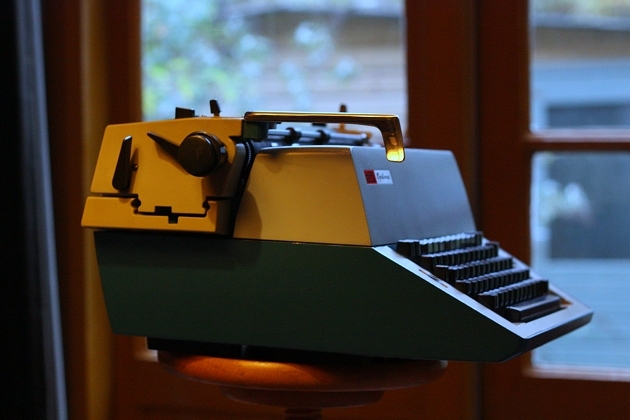
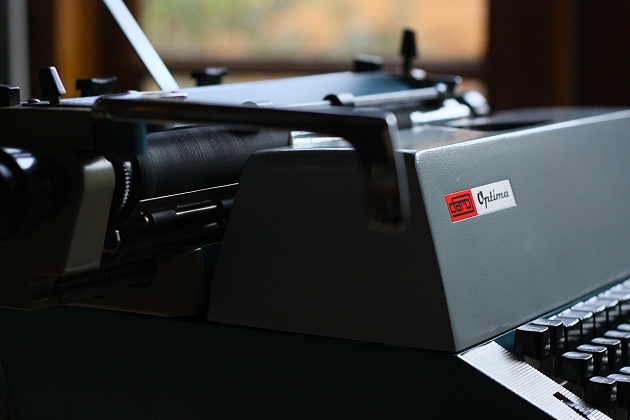
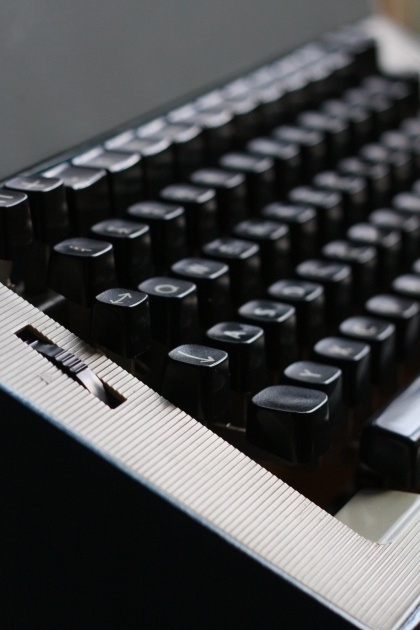
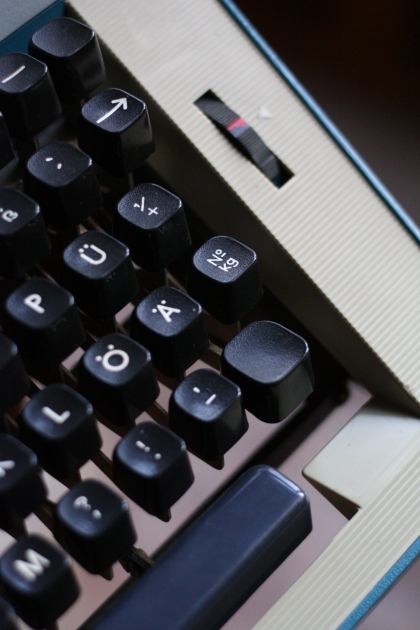
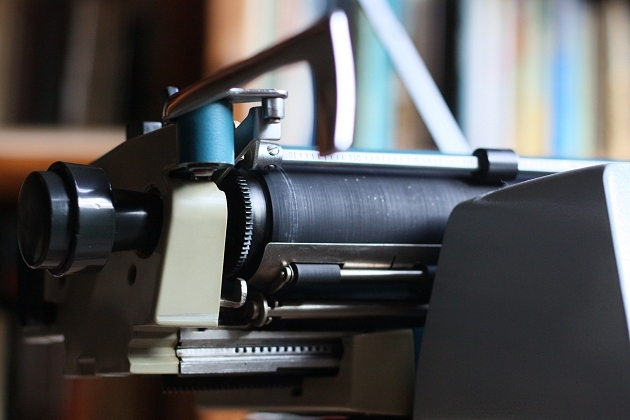
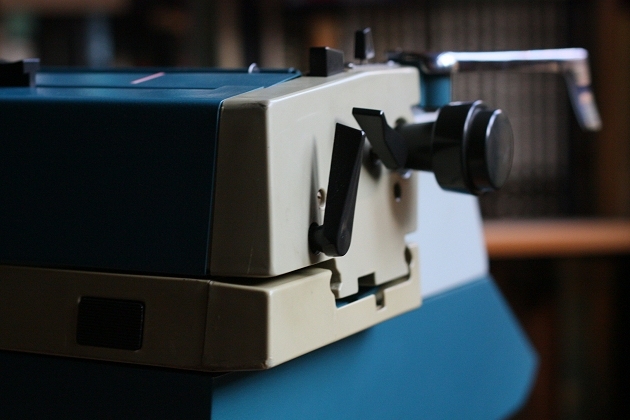
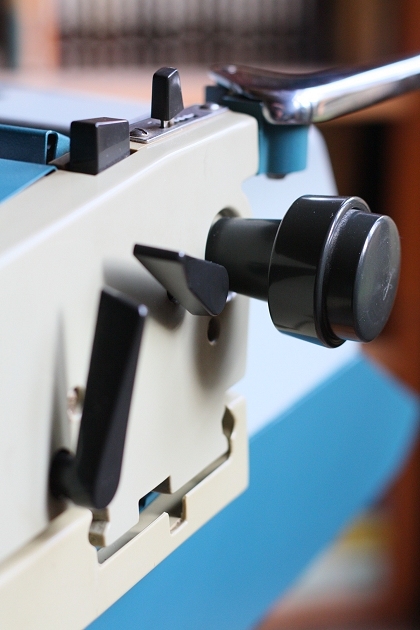
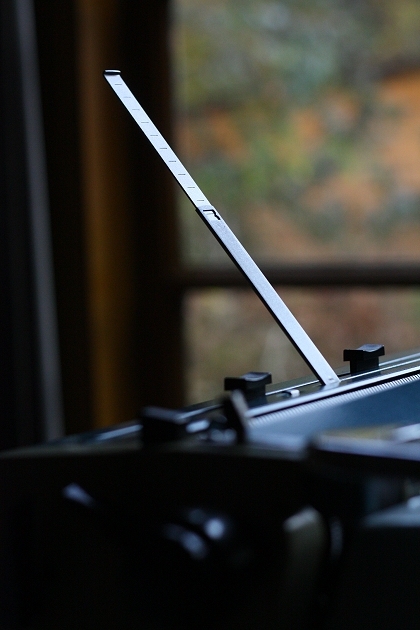
![The ribbon spools are of DDR-vintage as well [Barock, made by VEB Bürochemie Dresden]. The ribbon spools are of DDR-vintage as well [Barock, made by VEB Bürochemie Dresden].](https://typewriterdatabase.com/img/g7182_36526__36526_1481487113.jpg)
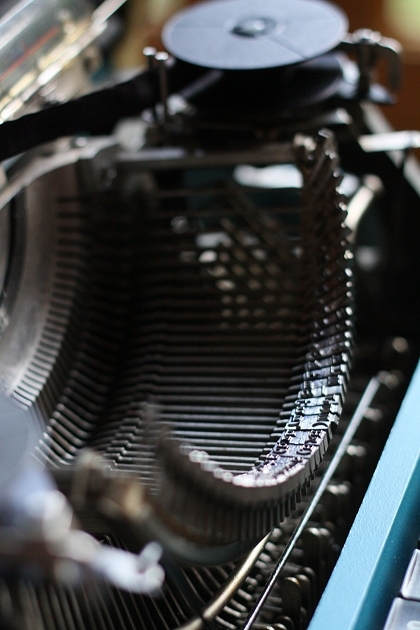
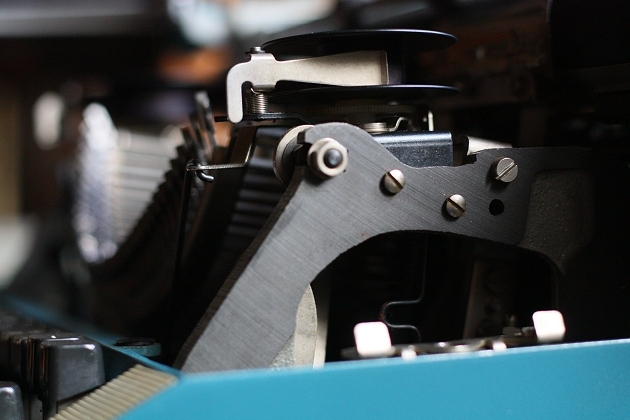
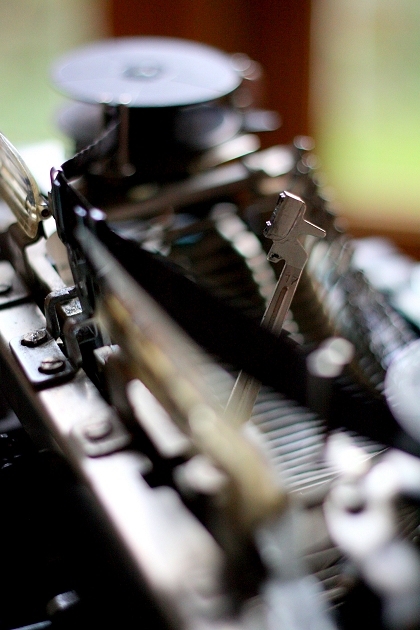
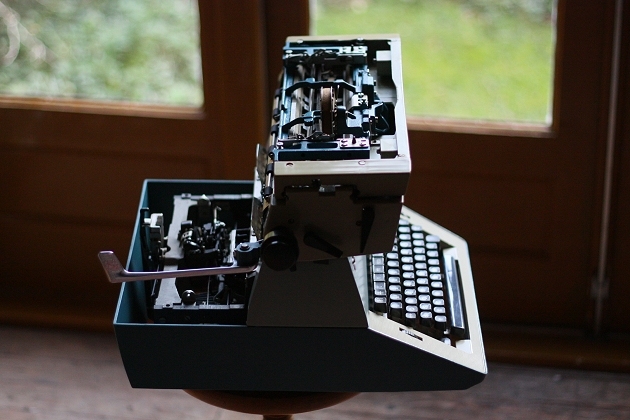
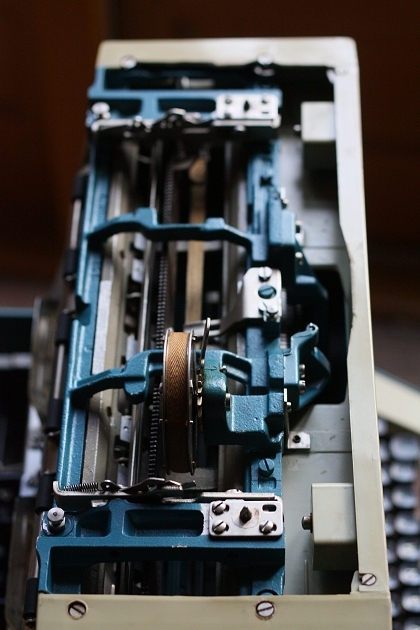
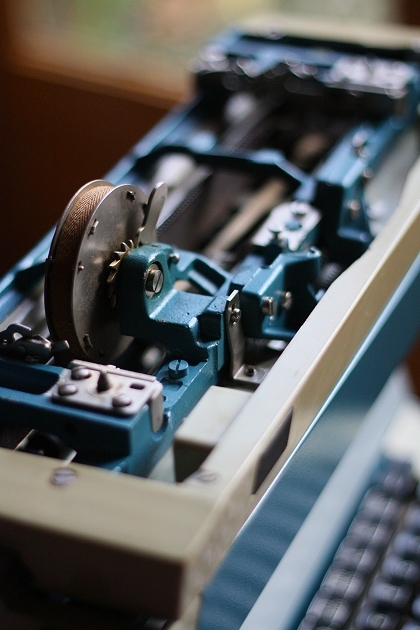
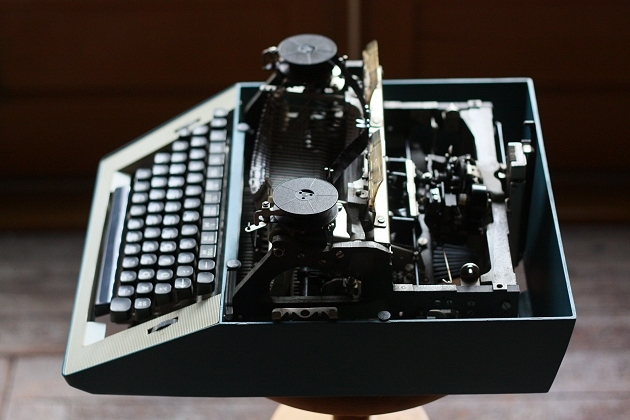
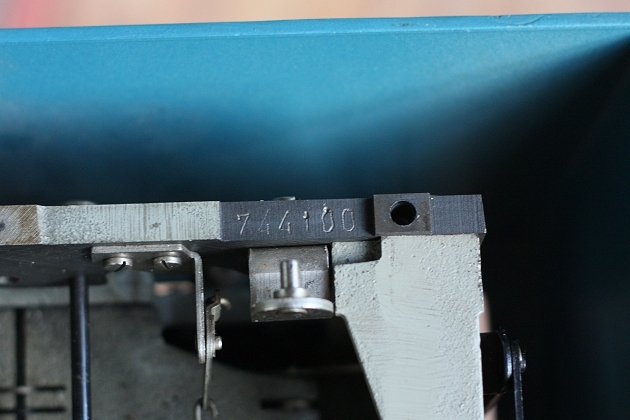
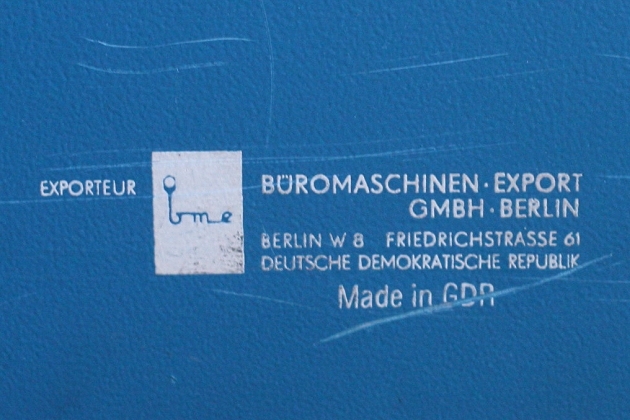
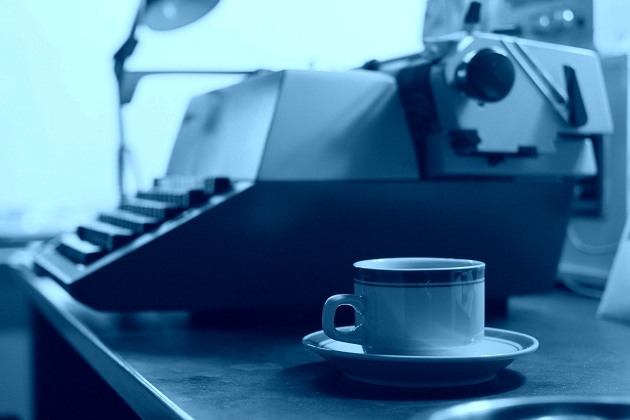
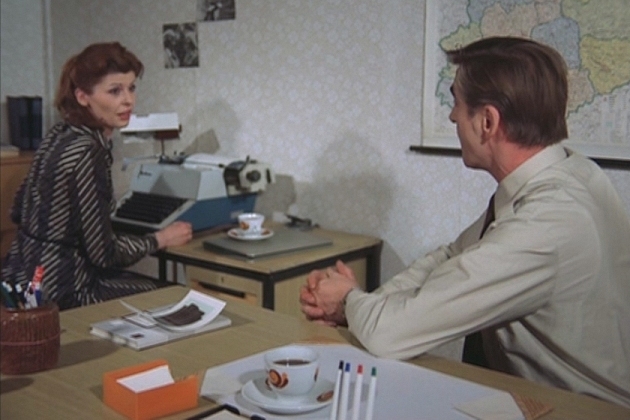
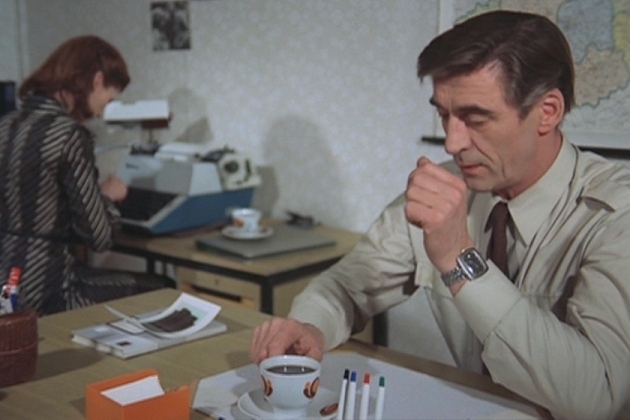
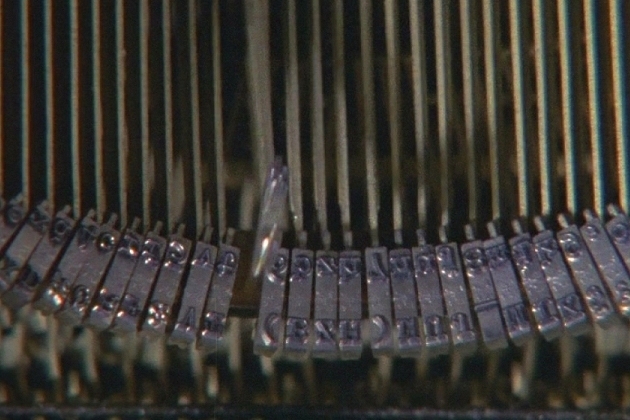
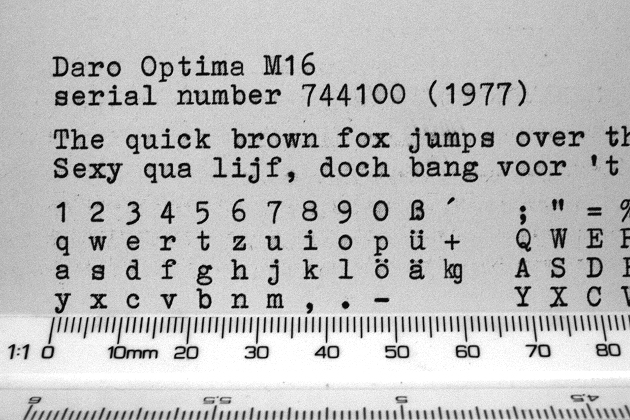
Hunter: Hans Boersma (Java68)
Hans Boersma's Typewriter Galleries [ My Collection ] [ My Sightings ]
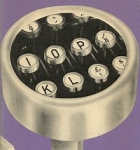
Status: Typewriter Hunter
Points: 580
I'm not really a hunter, or a collector. Well, I try not to be anyway. Typewriters should be used IMHO, and how to choose from an increasingly anonymous multitude? There is much to say for having just one typewriter, and sticking to it. But then again, there are so much beautiful and interesting typewriters out there, all with their own character and historical backgrounds... So I refer to my modest collection as "the machine park" and do my best to keep it from becoming a multitude. I decidedly favour standard-size typewriters: large office workhorses that throw their considerable weight behind your labours. Nicely over-dimensioned machines with a more than agreeable keyboard touch and a business-like appearance, ready for any job. I enjoy looking at "typewriter porn" on sites such as these, which provides an adequate substitute to having a larger collection. So... thank you for showing me yours!
RESEARCH NOTE: When researching the Optima M16 on a computer with lots of screen real estate, you may find that launching the Optima Serial Number page and the Optima M16 By Model/Year/Serial page in new browser windows can give you interesting perspectives on changes throughout the model series.
